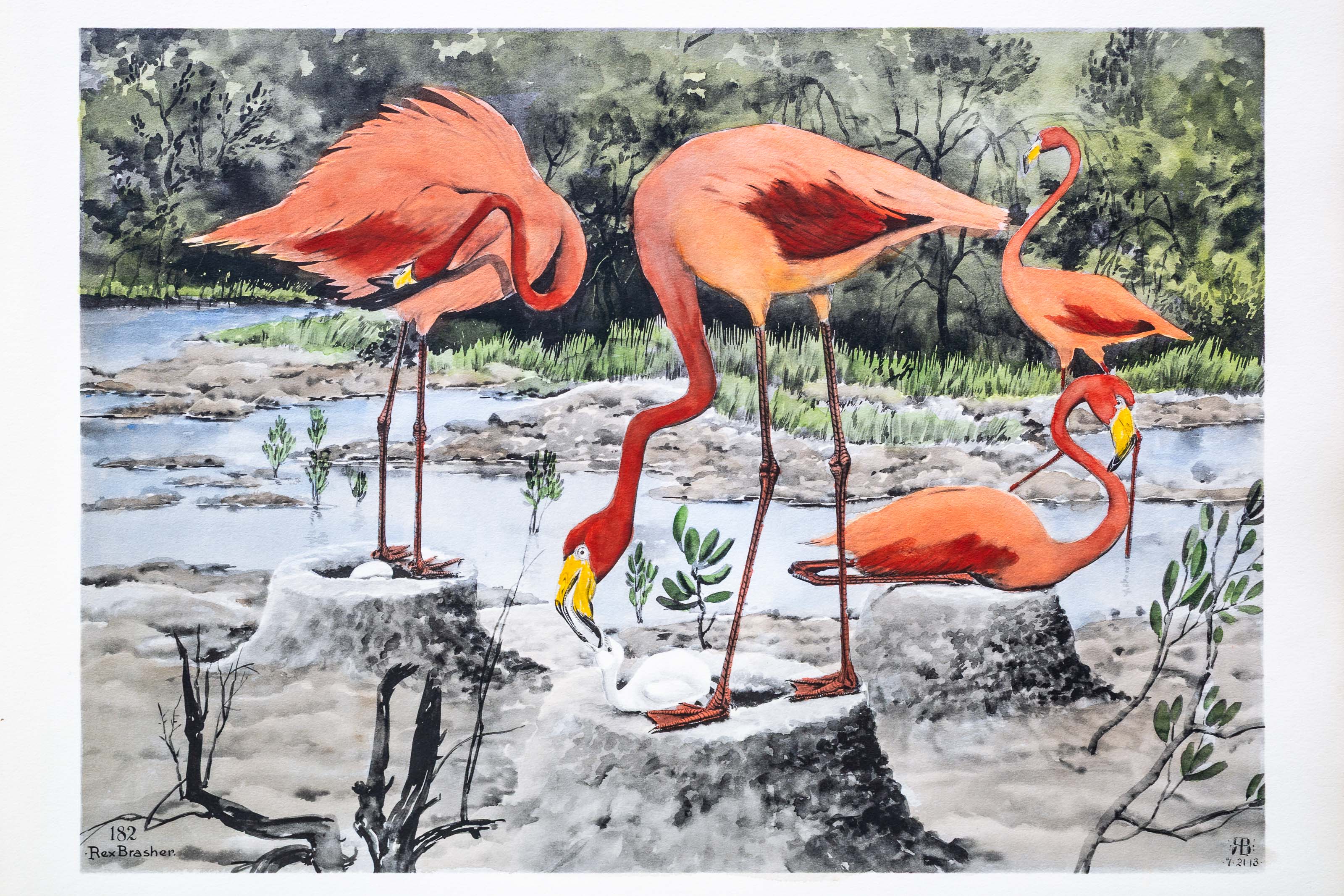
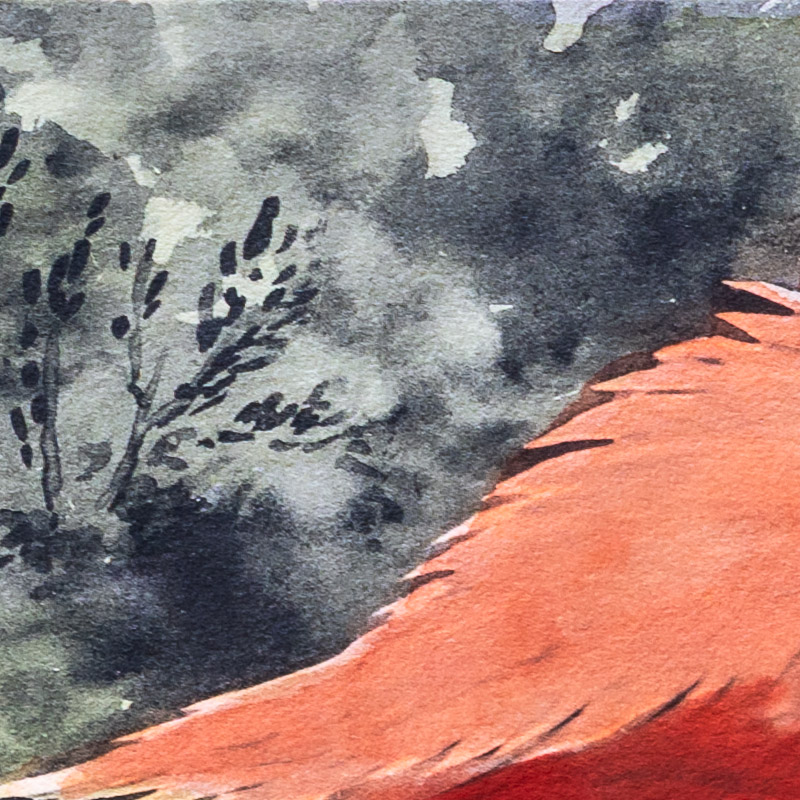
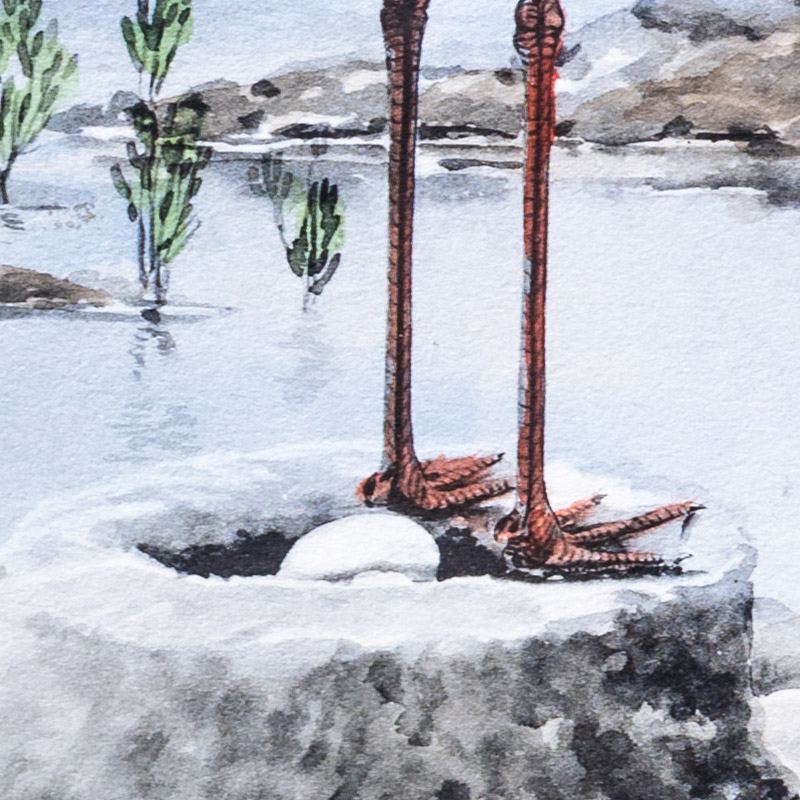
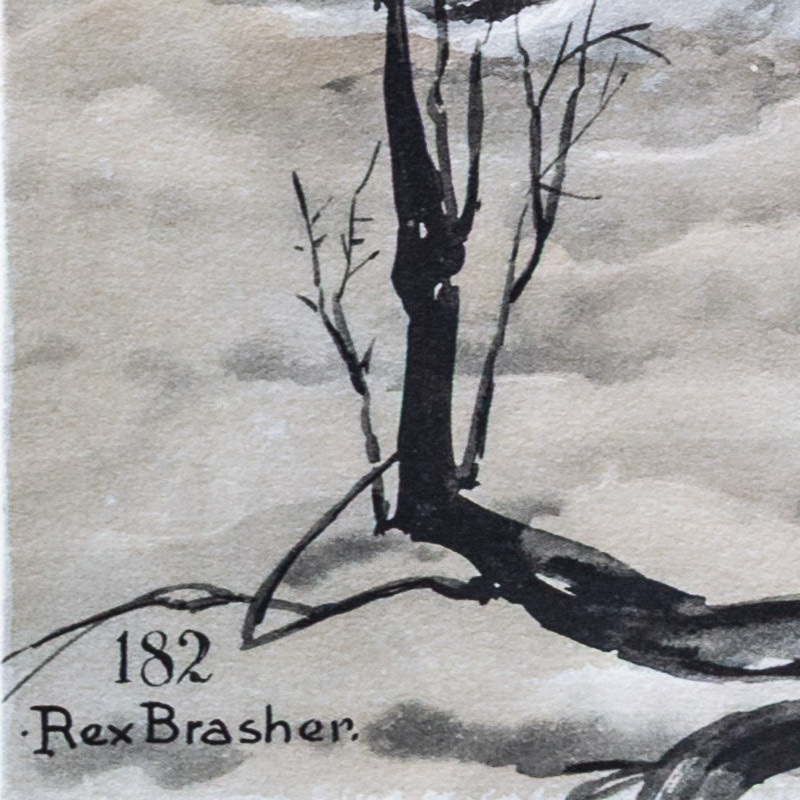
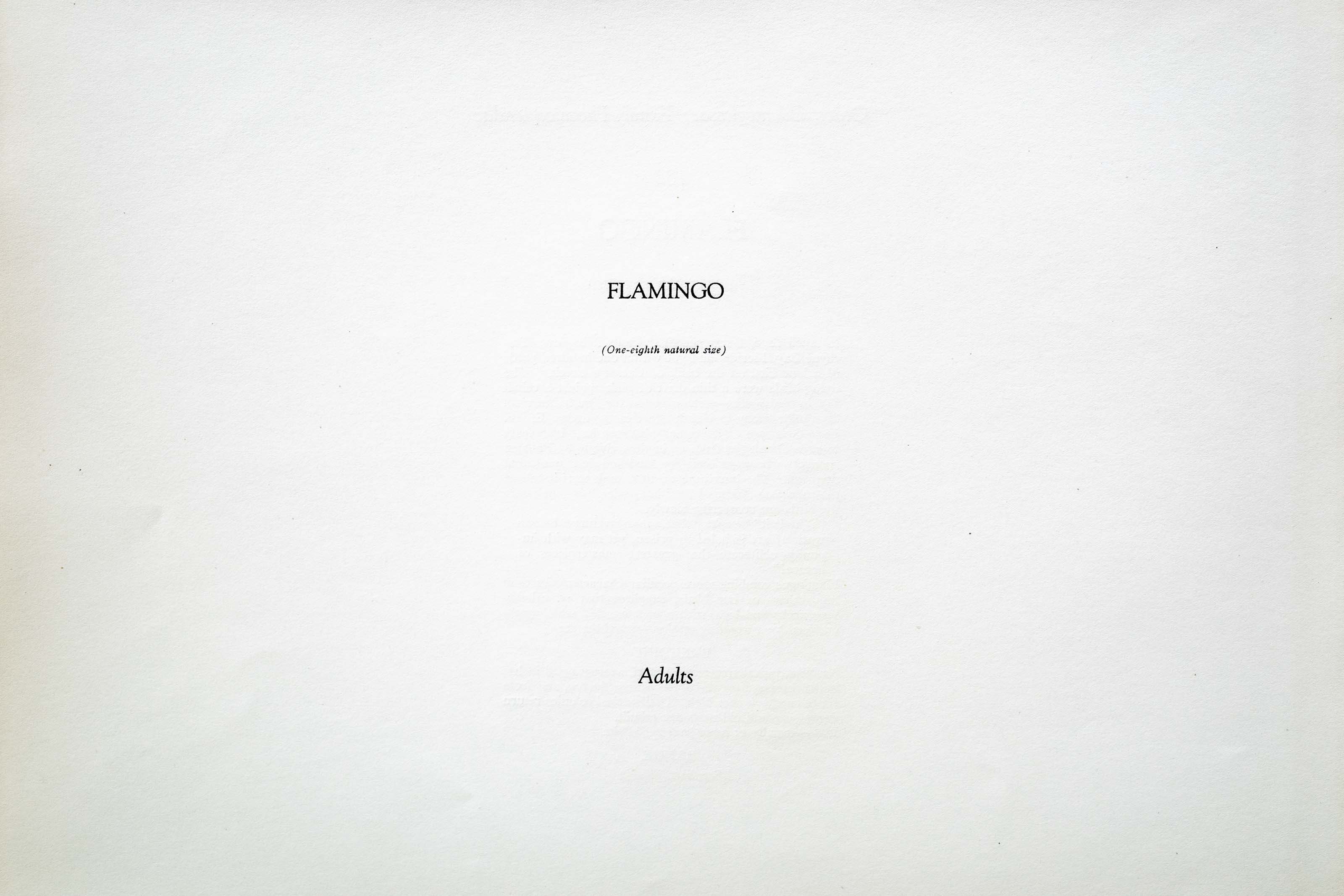
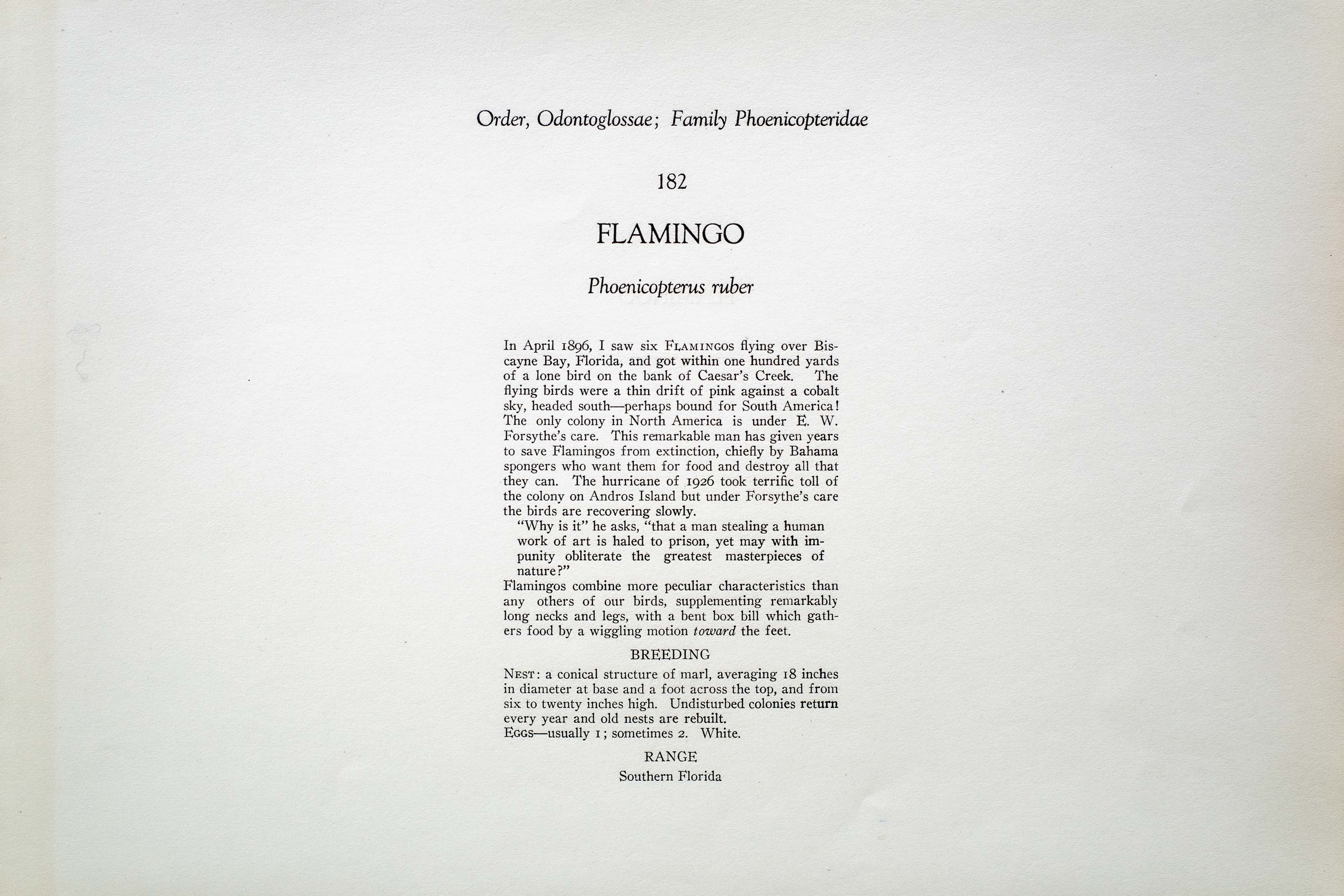

1913
1930
3
182
A team of dedicated board members, volunteers, and student interns has published every page in Volume 9. This volume includes 360 images of paintings and lyrical descriptions of birds, now available online for everyone to enjoy anywhere in the world. This is a monumental task. Each volume requires approximately 400 hours to photograph, edit, transcribe, catalog, and publish online. We need your support to complete this work.
If you're tech-savvy, have a good eye, are meticulous with details, and love structured data, please consider volunteering by emailing us at hello@rexbrasher.org.
We encourage all bird lovers and supporters to consider a monetary donation to support our mission to make Rex's work available for everyone. You can provide a one-time or recurring donation online.
In April 1896, I saw six FLAMINGOS flying over Biscayne Bay, Florida, and got within one hundred yards of a lone bird on the bank of Caesar's Creek. The flying birds were a thin drift of pink against a cobalt sky, headed south — perhaps bound for South America! The only colony in North America is under E. W. Forsythe's care. This remarkable man has given years to save Flamingos from extinction, chiefly by Bahama spongers who want them for food and destroy all that they can. The hurricane of 1926 took terrific toll of the colony on Andros Island but under Forsythe's care the birds are recovering slowly.
"Why is it" he asks, "that a man stealing a human work of art is haled to prison, yet may with impunity obliterate the greatest masterpieces of nature?"
Flamingos combine more peculiar characteristics than any others of our birds, supplementing remarkably long necks and legs, with a bent box bill which gathers food by a wiggling motion toward the feet.
NEST: a conical structure of marl, averaging 18 inches in diameter at base and a foot across the top, and from six to twenty inches high. Undisturbed colonies return every year and old nests are rebuilt.
EGGS — usually 1; sometimes 2. White.
Southern Florida.